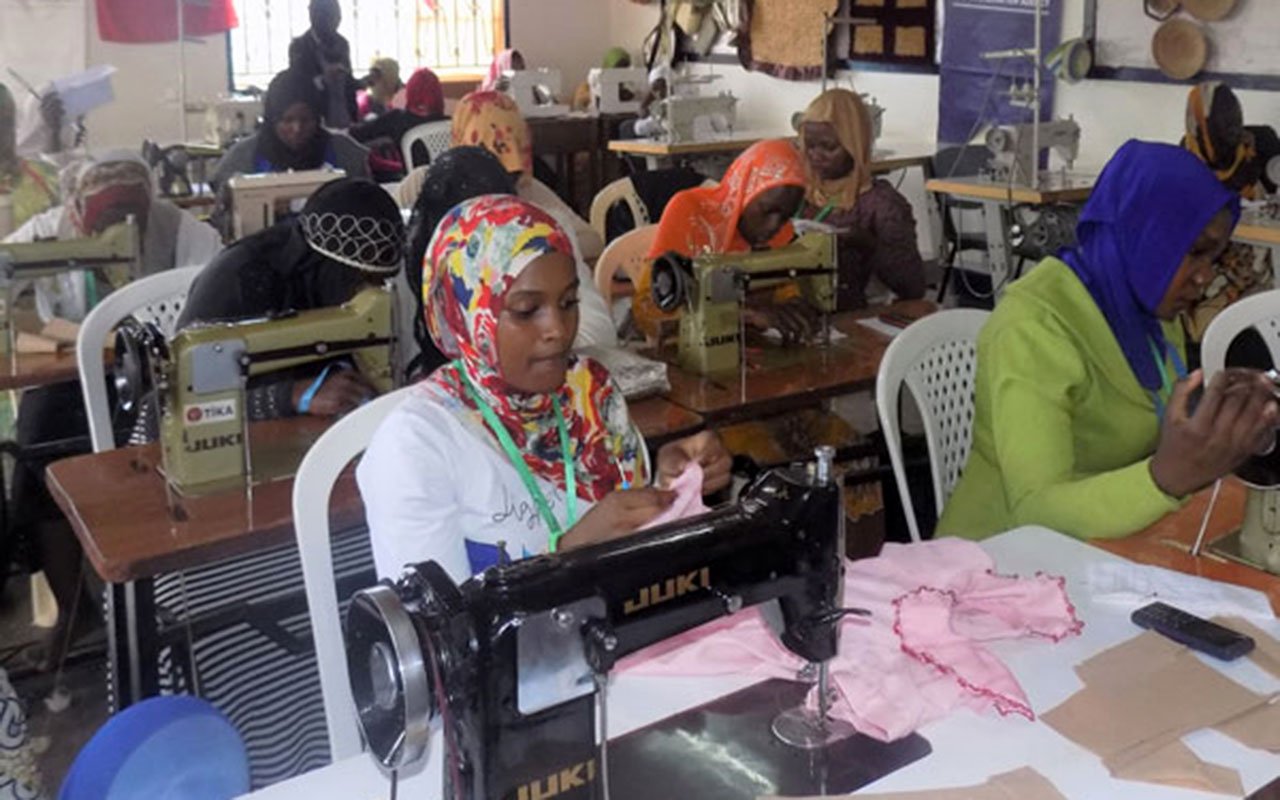Prime
How dam projects have impacted communities

Energy minister Ruth Nankabirwa (2nd left), UEGCL CEO Harrison Mutikanga (front) and other officials inspect the new staff quarters at Diima Primary School in Kiryandongo District in July. The school was built under the Community Development Action Programme. PHOTO / TOBBIAS JOLLY OWINY
What you need to know:
- In the Engineering, Procurement, Construction (EPC) contracts of each hydropower plant built, the government requires that the contractor and the project owner (Ministry of Energy) undertake corporate social responsibility (CSR) obligations.
Communities neighbouring major hydroelectricity generation facilities across the country have expressed mixed feelings about the impact of the projects on their social and economic development.
In the Engineering, Procurement, Construction (EPC) contracts of each hydropower plant built, the government requires that the contractor and the project owner (Ministry of Energy) undertake corporate social responsibility (CSR) obligations.
These range from the construction or repair of roads, schools, health facilities, and markets, among others.
For example, under the EPC contract for the Karuma hydropower project in Kiryandongo District, the contractor, Sinohydro Corporation, has undertaken several CSR initiatives such as building a market at Karuma Trading Centre and conducting annual health camps.
The company has also refurbished schools and sponsored disadvantaged learners in post-primary education.
In April 2021, Uganda Electricity Generation Company Limited (UEGCL), which is supervising the construction of the dam, handed over the newly built refurbished Masindi Military Hospital to the army.
The contractor spent $1.7 million (Shs5.4b) on the project, which upgraded the health centre IV facility into a general hospital. Works included the construction and equipping of seven new facilities such as a laboratory, surgical ward, theatre, mortuary, two nurses’ houses and one doctors’ house.
The contractor also earmarked up to $4.5m (Shs17b) to deliver all projects under the Karuma dam CSR component, including two hospitals and a primary school. The firm is also completing the construction of Dicwinyi Health Centre IV and Amaji PS in Oyam District.
Opportunities
During the construction of the dam, there was a rapid increase in population at Karuma Town Council fuelled by people seeking jobs and business opportunities.
The UEGCL embarked on a general Community Development Action Programme (CDAP) to increase social amenities in surrounding communities.
“CDAP targets the mitigation of increased pressure on local social infrastructure, social services, livelihoods, and natural resources, arising from the implementation of the projects in Kiryandongo, Oyam, and Nwoya districts,” Mr Enock Kusasira, the UEGCL spokesperson, said.
In July, the Energy ministry commissioned the newly constructed Purongo and Diima primary schools in Nwoya and Kiryandongo districts, respectively at a cost of more than Shs1b.
Mr Kusasira said the facilities implemented under the Karuma Hydropower Project CDAP included two classroom blocks with the head teachers’ offices, four staff houses and pit-latrines.
While UEGCL is already carrying out CSR activities in communities around Isimba dam, it is yet to start for Karuma.
“For Karuma, we are still doing CDAP, CSR will only begin when we commission the dam and start selling the generated power, but for Isimba, we are already doing it using profits from the sale of generated power,” Mr Kusasira said.
Near the border with DR Congo sits the Nyagak hydropower dam in Zombo District. However, livelihoods of communities around the 3.5MW power dam are yet to be impacted.
“I failed to connect my salon to power because they overcharged me yet the electricity is generated from our village,” Ms Catherine Aciro, a hairdresser at Paidha Town Council in Zombo, said.
Construction at Nyagak III is still ongoing but Dott Services Ltd, the contractor, hopes to finish the project by March next year after the work stalled for months.
Mr Ayoub Marthoum, the assistant project manager of Dott Services Ltd, told Daily Monitor in July that the work was at more than 70 percent complete.
“Works were halted because heavy trucks cannot access the site due to bad weather coupled with bad roads,” Mr Ayoub said.
In Busoga Sub-region, the Isimba hydropower dam’s CDAP has improved livelihoods in Kayunga and Kamuli districts.
The project has led to the construction of a maternity ward, an outpatient dispensary, and paediatric wards at Namusaala Health Centre II, Nakatovu and Bukamba Health Centre IIs in Busaana, Kayunga.
A staff house and general ward were also constructed at Busaana Health Centre III.
“The works at the health facilities led to the elevation of the health centre IIs to health centre III. Health services have improved since there is a doctor and more health workers,” Mr David Mubialiwo, the Busaana Town Council mayor, said.
Isimba dam under the CDAP has also connected more than 70 villages under the rural electrification and grid extension in the host districts.
The head teacher of Njeru Primary School in Njeru Municipal Council Buikwe District, Mr Farouk Musuuba, said Eskom Uganda Ltd has improved the learning environment.
Mr Musuuba said Eskom replaced all asbestos roofs of the school with iron sheets, fenced its land, and provided all requirements for the institution’s reopening during the Covid-19 pandemic.
“There are also plans to put up a library and rehabilitate the hall,” Mr Musuuba said.
Mr Emmanuel Njuki, the company’s manager of corporate affairs, said Eskom has focused on health, environment (planting trees) sports, education, and installing streetlights.
The company installed 31 solar street lights on Gabula Road at a cost of Shs233m, and equipped Kimaka Health Centre II maternity ward in Jinja City at Shs200m.
Mr Njuki said the company provides jobs to residents and those contracted have set up workshops.
He added that the company funded the construction and furnishing of the Gulu War Affected Training Centre (GWATC) as part of a shared initiative to meet community needs.
GWATC started in 2005 with five students and has enrolled and graduated more than 500 students with a new structure accommodating about 100 students in each intake.
Meanwhile, communities around Bujagali Hydropower station near Jinja City say the promised benefits by its managers are estimated at 50 percent after 10 years of operation.
The Jinja North City Division Mayor, Mr Ayoub Wabika, who headed the defunct Budondo Sub-county where the Bujagali power dam was built, said several contractual CSR obligations have been met.
These include power extension to neighbouring communities, construction of a maternity ward at Budondo Health Centre IV and installation of a standby generator at the health facility, job creation, and road maintenance
In 2015, the government embarked on the constriction of the $18m (about Shs64b then) 6.5MW Muvumbe Hydropower Dam in Kigarama Village, Nyanja parish, Maziba Sub-county in Kabale District which was completed 18 months later. However, the project is yet to benefit the local community.
“Hydropower lines are just passing over people’s houses and yet they had promised that the generated electricity would be connected to houses in trading centres and homes to boost the development of cottage industries,” the sub-county chairperson, Mr Onesmus Mutungi, said.
Mr Mutungi said the investors told them to ask UEDCL why they were not connected to the national grid, but the latter hasn’t yet addressed the concern.
Communities around the 6.5MW Ishasha mini-hydro power dam, which was built by ECO Power Uganda Ltd 11 years in Kanugu District, also claim they have not benefitted. The business community complains of load shedding .
Mr James Ruugi Kaberuka, the Kinkizi West MP, attributes the problem to the failure by UEDCL to effect transmission of electricity in the highland mode.
In the absence of a transmission line, UEDCL in 2019 committed Shs6.6b as an alternative intervention to build a 33KV double-circuit distribution line to evacuate the idle electricity power generated at Aswa Hydropower Dam in Angagura Sub-county, Pader District.
Although the alternative has since been able to evacuate only 12MW of the 42MW generated at the dam to Gulu and Kitgum substations, the line according to UEDCL spokesperson, Mr Jonan Kiiza, has reduced power outage in Acholi Sub-region by 85 percent.
“The 66kV is terminated at Layibi in Gulu for distribution, this has stabilised electricity availability in the region. There is now abundant and stable power to attract investors and create jobs,” Mr Kiiza said.
The construction of a power station at the foot of Latyeng hills across Aswa River in Angagura Sub-county, Pader is also complete.
Compiled by Tobbias Jolly Owiny, Teddy dokotho, Fred Muzaale Al-Mahdi Ssenkabirwa, Clement Aluma, Felix Wa rom Okello, Peace Giramia, Robert Muhereza, Naume Biira, Denis Edema, Abubaker Kirunda, Felix Ainebyoona & Tausi Nakato.




